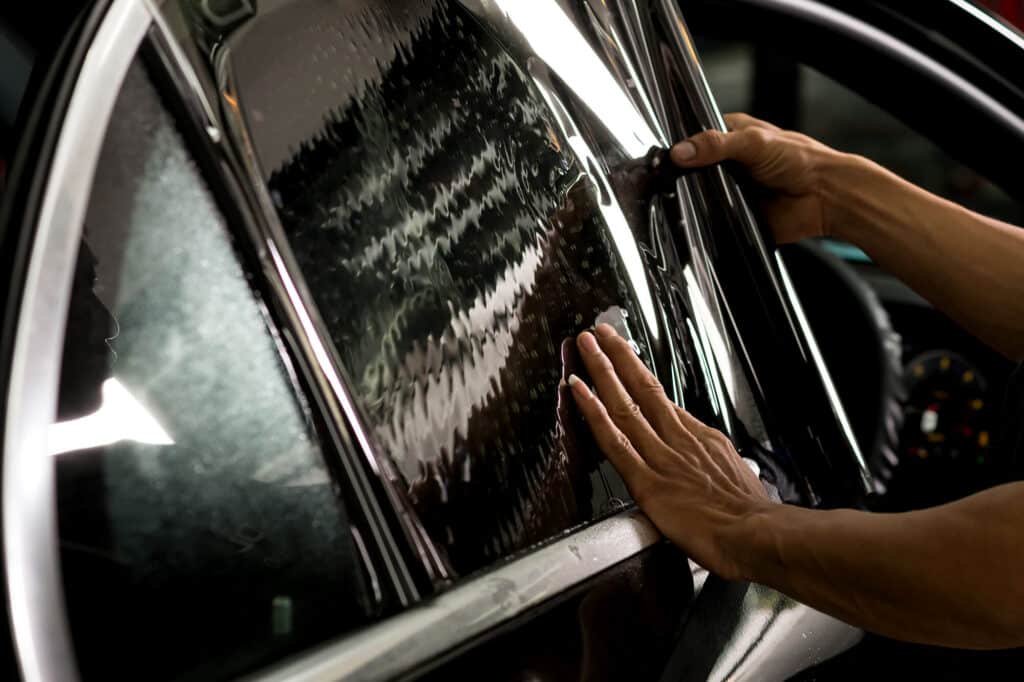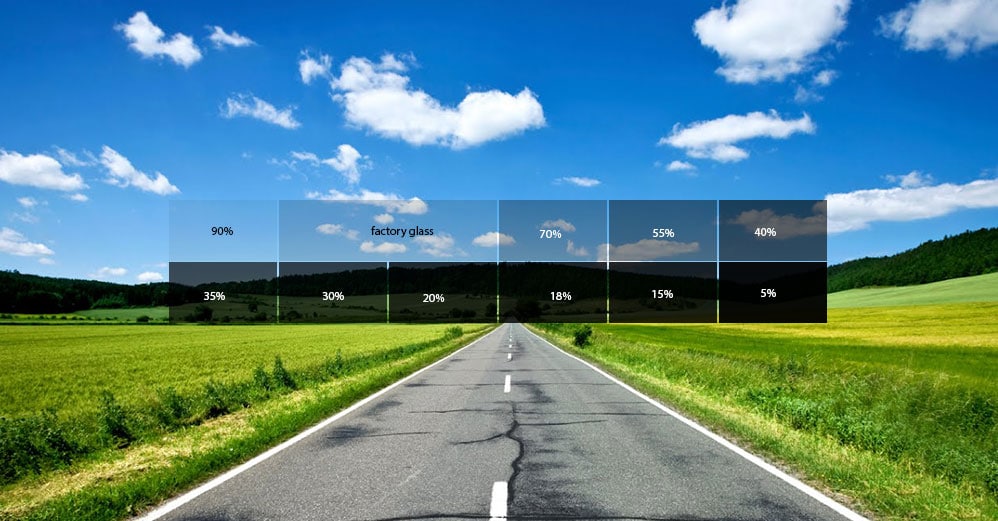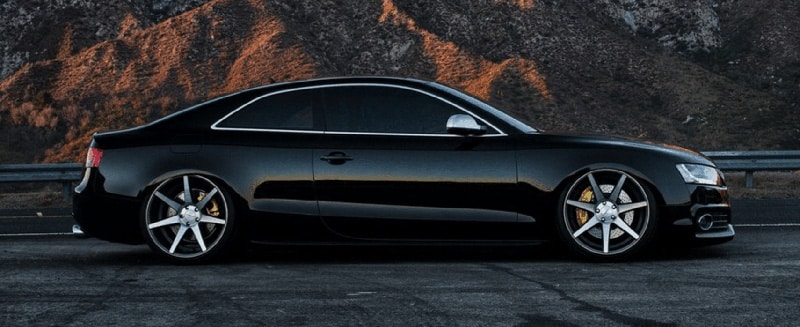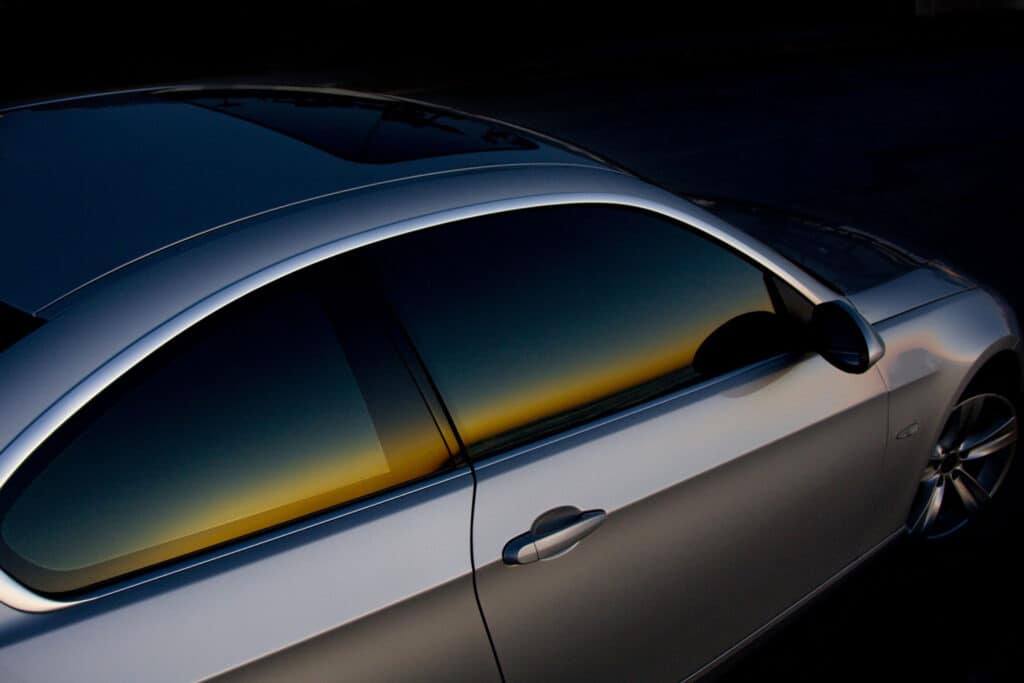Car modification laws in California have always been more restrictive compared to other states. The same is true when it comes to window tint.
Whether you drive an SUV, sedan, van, or truck, you’re going to want to be aware of your local laws before you get your windows tinted. That way you can be in the clear and avoid being fined if and when you get pulled over.
Tinted windows are both functional and aesthetic — they keep the glare out, provide privacy, reduce the heat inside the car, and look great.
The state of California does not prohibit window tinting; instead, it dictates strict guidelines on how you should go about it.
These laws were enacted in 1999, specifying the amount of tint darkness and reflection allowed in each vehicle.
In this article, we’ll discuss everything you need to know about tinting your windows in the Sunny State.
Is Window Tint Legal in California?

Window tint is legal in California as long as it is installed and used correctly. You can use tint films that fall within the required transparency levels for different windows.
The level of transparency is measured with the help of a unit called visible light transmission, abbreviated as VLT. It measures the amount of light that’s allowed to pass through the tint.
VLT is the gold standard when it comes to measuring window tint transparency across the country. The higher the VLT percentage, the lighter the color of the film.
Additionally, window tint film should not be reflective and must be non-metallic. This is required for the safety of oncoming traffic.
The next section of the article elaborates on the window tint laws in California.
California Window Tint Laws: Transparency

There are particular state laws related to window tint darkness in California that dictate the color of the tint allowed.
Sometimes, counties and towns in the state can have their own window tint laws, so it’s always a good idea to check with your local law enforcement. Here are the general rules for window tint darkness.
Sedans

Windshield: 4 inches of non-reflective tint film is allowed at the top of the windshield, also known as the “eyebrow” region.
Driver-side windows: If an aftermarket film is used, it should allow for more than 88% VLT. If the window glass itself is tinted from the factory, with the addition of aftermarket tint then, 70% combined VLT is mandated.
Passenger-side windows: No limit on tint darkness is placed for passenger-side windows.
Rear window: No limit on tint darkness is placed for rear windows. However, if the rear window is tinted, side mirrors are compulsory.
SUVs and Vans
Windshield: Non-reflective 70% tint on the top 4 inches of the windshield (“eyebrow” strip) is allowed.
Driver side windows: A minimum of 88% of VLT is compulsory if aftermarket film is used and a 70% minimum VLT is compulsory if there is a combination of factory-tinted windows and aftermarket film.
Passenger-side windows: The tint can be of any VLT level.
Rear window: The tint can be of any VLT level, but tinted rear windows can only be used if dual side mirrors are also present.
Acceptable Tint Reflection
Tint reflection is different from tint darkness; the former refers to the amount of light the film can reflect, and the latter refers to the opacity of the tint film.
For example, black tint films have a high amount of darkness, but they don’t usually reflect any of the light back, so there is no tint reflection.

Looking at a window with reflective tint is almost like looking into a mirror. The more reflective the film is, the harder it is to look through it.
Many people use reflective tint film to keep their cars cool and reduce glare. Now, even though this upgrade is permitted, there are rules around how reflective the film should be.
Therefore, the general rule for all tinted vehicle windows is that the film shouldn’t be more reflective than a standard window would be, which also means that silver film is illegal.
In the case of sedans, vans, and SUVs, none of the tint film used should be any more reflective than a standard window.
Other California Tint Rules You Need to Know
Here are a few more rules to bear in mind when it comes to California tint laws:
- Colored film: The use of colored window tint film is not permitted. Especially amber, blue, or red.
- Certificate: If your car windows are tinted, you are required to carry a signed certificate from the window tint installer which clearly specifies the VLT percentage.
- Sticker: You need a sticker provided by the tint installer which states the name and address of the tint manufacturer.
- Manufacturer’s license: Tint laws apply to tint manufacturers. They must certify their product before they can sell it. Additionally, the manufacturer must collect all the details of the clients to whom they sell.
- Condition of the film: Old, bubbling, peeling, torn, or worn-out tint film is considered illegal and must be immediately removed or replaced, as it is a hazard to the driver’s vision.
- Medical exemptions: Medical exemptions have been allowed since 2017 by the state and concern drivers who can’t see clearly while driving, especially those with conditions such as melanoma, allergies to sunlight, lupus, and photosensitivity.
- Such drivers are exempt from window tint laws if they submit the necessary documents to prove their condition and their requirements.
- Penalty: First-time offenders are let off with a warning to fix the offense. If caught a second time, they can be fined up to $25 and the third time, charges can go up to $197.
State of California Info

Sitting in the western part of the United States, California is the country’s third-largest state and its most populous.
Bordering Nevada, Arizona, Baja California, and Oregon, the Golden State is known for its cable cars, a 900-mile coastline along the Pacific, redwood forests, and historic monuments.
Population: 39,185,605
Capital: Sacramento
Area: 163,695 mi²
Registered vehicles: 14,201,400
Total lane miles: 386,604
Number of highways: 25
Tint Law References: California Vehicle Code
Medical exemption info: Assembly Bill No.1303

